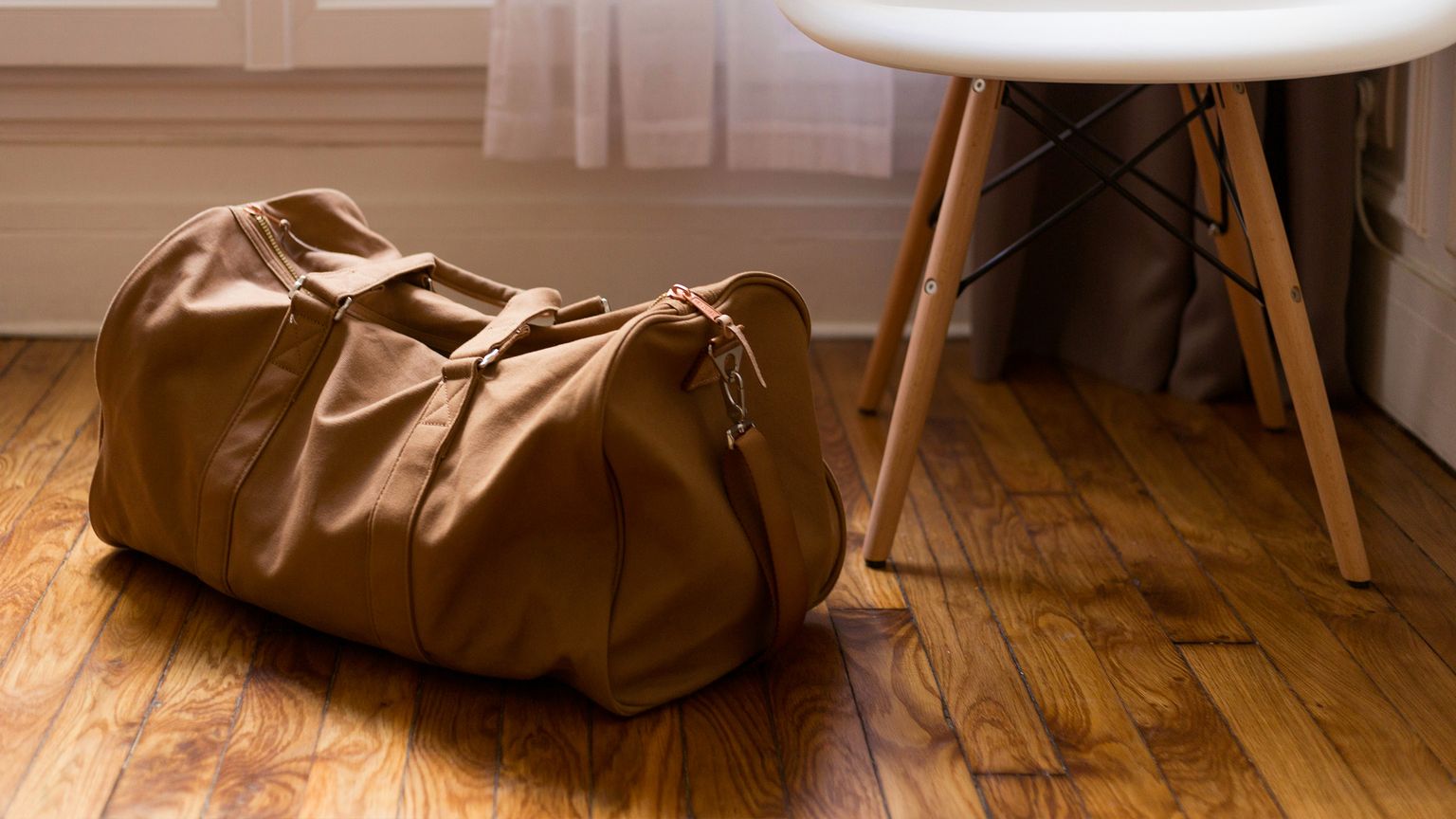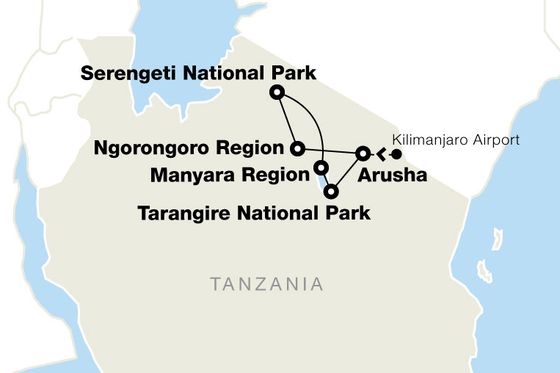Your comprehensive packing guide for a dream African safari
Ever wondered what to wear when looking for leopards in the Serengeti? Or, what to have in your backpack as you scour the savanna for lions? Here are your answers.
So you’re going on an African safari. Hooray! From the stunning landscapes to the jaw-dropping wildlife, there’s a lot to be excited about before departing on your trip to Kenya or tour of South Africa. Go Ahead’s been leading memorable African safaris for decades, and we know that, under all the excitement, there’s also lots that goes into preparing for your first safari (especially when it comes to what to pack for the trip). An African safari is unique in that it often includes domestic flights on small planes with specific luggage requirements: You’re only permitted to bring smaller soft-sided bags. You read that right: No hard-shell suitcases. And this of course will inform how you pack for the entirety of your trip. So, we’ve put together a comprehensive guide full of our top safari packing tips.
When it comes to safari luggage, a soft duffle is key
Going on an African safari means journeying around in a 4x4 Jeep with limited storage space. Additionally, some safaris will take you to remote parts of African countries, like South Africa, Zambia, and Botswana—and getting to these places often requires flying on smaller aircrafts. Both the Jeep storage capacity and the size of these planes determine which suitcase you can bring and how much you can put in it. (For example, smaller planes require passengers to pack light.) It’s also important to remember that the cargo compartments of these vehicles and planes are not only compact, they’re often oddly shaped. And this can make fitting in hard-shell suitcases and their wheels very difficult. Soft-sided duffel bags are more flexible and therefore easier to arrange inside these tricky spaces. This is a standard policy on all of our African safaris, and it’s one of the most important African safari packing tips you need to remember.

How to pick the best safari travel duffel?
Once you select the right African safari for you, your next task will be figuring out the best safari travel duffel. Yes, it has to be soft-sided, but it must also meet size and weight allowances to comply with safari travel storage. How big and how heavy your safari bag can be actually differs based on the specific safari tour that you’re taking with us—and the aircraft you’re flying and the country you’re traveling in. To find your exact baggage information, check the tour page for your trip or your online account. As a general rule, your entire luggage haul should not exceed the listed limit (this includes whatever personal item you may be carrying separately from the duffel). Keeping your tour’s requirements in mind, here are some of our recommendations for the best duffel bags for safari travel.
We recommend looking at durable duffel bags made from weather-restistant fabric that can hold between 45-60 liters. Many bags you’ll encounter will also have handy features (think: compartments for dirty clothes, easy-access pockets, etc.). These can be great options to keep your things organized as you hop between safari camps and lodges, so take your time shopping around to find the perfect duffel bag for you.

What to wear on safari (and why it matters)
African safari packing tips—whether you’re on our Botswana & Zimbabwe Wildlife Safari tour or the Kenya Culture & Wildlife Safari: Samburu to Maasai Mara tour—can be very specific. We already touched on how to pick out the best safari travel duffel. But there are tips that apply to the clothes you should wear, too.
When on an African safari, you want to wear neutral colors that blend in with the hues of the surroundings. We’re talking beige (and most colors of the brown family), olive, and white. You want to avoid bright colors and patterns that might alarm wildlife, which could encourage them to scurry away.
For dinners at the lodge, or if you’re heading to the beach during the Zanzibar extension of our Tanzania Wildlife Safari tour, you may want to add colors and patterns to your travel wardrobe. But, at least for game drives, stick to simple, comfortable pieces in colors that mimic stunning African landscapes. When it comes to your tour wardrobe, packing these items is one of our top African safari packing tips.
Comfortable walking shoes
This tried-and-true travel must-have becomes even more important on an African safari. You might do some walking in the bush; plus, camps can have uneven grounds or slippery walkways from morning dew. You want to have your most comfortable closed-toe footwear. If you’re looking for ideas, we love sturdy Chelsea boots with a grippy sole or a pair of trail sneakers. Just make sure to also throw a pair of sandals in your bag, too, for heading from your room to your lodge pools!
Lightweight layers
In Sub-Saharan Africa, weather can vary throughout the day. It might be sunny and warm in the morning but cool and breezy late in the afternoon. Traveling with lightweight layers (in breathable materials like cotton and linen) can help you manage these see-sawing conditions. May we recommend a button-down linen shirt in khaki or a light scarf?
Breathable pants
Whether it’s a stretchy pair of pants made of technical textiles or cargos that can unzip into shorts, a couple of pairs of easy-to-clean lightweight pants will go a long way on an African safari.
A warm windbreaker
Some game drives take place at sunrise when it’s cooler and therefore animals are more active. While most lodges and camps offer blankets, you should have a jacket for added warmth. There can be a chance of rain on safaris as well, so we recommend a water-resistant windbreaker that will also keep you warm.
A hat
During days and afternoons, you will likely encounter some bright sunshine. For sun protection, don’t forget to bring a wide-brim hat. Bonus points if it has a strap: Hats have a habit of flying away on game drives!

Must-have safari accessories
You’ve got the basics down. Now, here are a few more pieces that can complete your African safari wardrobe.
Binoculars
Your expert driver will get you as near as possible to all the best wildlife sightings around, but sometimes the roads in the parks can only get you so close. In these cases, a pair of binoculars will help you see it all clearly.
Sunglasses
While most game drives take place early in the morning and just before sunset, you can still expect quite a lot of sun, which makes sunglasses a must-pack for an African safari. They’ll provide protection from UV rays, help reduce glare, and prevent eye strain. And in some cases, they can shield your eyes from dust, too.
Sunscreen and bug spray
All the safari animals your wildlife-loving heart is longing to see live in these areas—but so do pesky bugs that you’ll want to protect your skin from. And speaking of, the savanna sun’s rays are no joke, so it’s always best to be prepared with all the products you and your skin know and love.
Camera
For many travelers, a phone camera will be plenty to capture photos that’ll remind you of your trip for years to come. But if you prefer to take higher-quality photos, don’t forget your camera and all its necessary accessories, like a charged battery and storage drives. Pro tip: A powerful zoom lens will help you get the most iconic shots.
Adapters
Not every country in Africa uses the same adapter and plugs. Double check which one(s) you need for the country (or countries) you’re heading to.
Swimsuit
Depending on the lodge you’re staying at, there may be a pool. You’ll want to be ready to take a cooling, midday dip.
Small day bag
It’s always easier to have a handy bag in which you can tote around your essentials—even if it’s just a water bottle and your phone.

What not to pack on a safari
In general, whether you’re taking our once-in-a-lifetime Rwanda: Cultural Kigali, Mountain Gorillas & Wildlife Safaris tour or the inspiring Namibia Wildlife Safari: Desert Landscapes & National Parks tour, it is important to not overpack for an African safari. In fact, one of our most important African safari travel tips is to pack light by focusing on the essentials. But in terms of what you can leave at home, here are a few more specifics:
Hard-shell luggage
It bears repeating, but hard-shall suitcases with wheels are an absolute no-no on an African safari.
Heels
As a whole, an African safari is a casual experience, so you won’t really need to dress up an outfit with heels. Even more casual options like heeled boots may not offer the comfort and stability you need in the bush.
Scents and fragrances
Potent perfumes and body lotions can also attract bugs and insects. Best to leave those at home.
Drones
As a blanket statement, drones are typically not permitted in countries where you would go on an African safari. And in countries where you are allowed to use drones, you are required to obtain an official permit ahead of your trip. Unless you are absolutely certain that you can bring and use a drone on one of our tours, we suggest erring on the side of caution and leaving that expensive equipment at home.

Final tips before you zip (up your bags)
We’ve touched on our more asked about African safari packing tips, including the best duffel bag for safari travel storage and the items you’re better off leaving at home. But before you pack up, here are a couple of final reminders:
Check that list
We know that a lot goes into prepping for a big, bucket-list trip like our Kenya Wildlife Safari tour. A lot of us wait a long time to go on a trip like this. So, double-check that all the important stuff has been sorted out.
Go through the guidelines
Your African safari may have requirements and restrictions that are different from other Go Ahead tours you’ve taken. It would be a good idea to review the tour itinerary and guidelines to ensure you’re fully prepared to go on an unforgettable trip.
















































